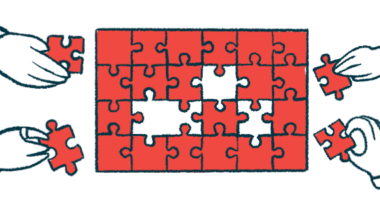Woman’s eventual AIP diagnosis complicated by repeat seizures
Abdominal pain and neurological symptoms should prompt test for porphyria

A 20-year-old Chinese woman experiencing bouts of abdominal pain and seizures eventually was diagnosed with acute intermittent porphyria (AIP), the most common form of acute porphyrias, after a series of tests.
Her case highlights that “it is essential to consider acute intermittent porphyria diagnosis in patients having unexplained severe abdominal pain associated with neurological and psychiatric symptoms,” the scientists wrote in their report.
“Since AIP is a rare disease with a high mortality rate when not treated early, clinical practices should include AIP as one of the tests done on patients showing these symptoms at an early stage,” they added.
AIP symptoms can be similar to those of more common diseases
The case study, “The diagnosis of acute intermittent porphyria combined with seizures: Case report,” was published in the journal Medicine.
AIP is a type of porphyria, a group of conditions characterized by disruptions in the production of heme, an essential molecule that helps to transport oxygen throughout the body. Such disruptions lead to the toxic accumulation of heme precursors, called porphyrins, in the body, causing disease.
Diagnosing AIP can be challenging because its symptoms, which can include pain, gastrointestinal issues, and changes in mental status, often are similar to those of more common diseases. When AIP is combined with seizures, the diagnostic process can be even more complicated.
Scientists in China described the diagnostic journey of a young woman with AIP and seizures.
Despite otherwise being in good health, she complained of abdominal pain, nausea, vomiting, and intermittent convulsions.
Her medical history included bouts of dull abdominal pain over the course of the past three years, which were sometimes accompanied by nausea, vomiting, and fever. Each episode lasted from several hours to several days.
Woman initially treated for gastritis, acne, and intestinal obstruction
She was initially diagnosed with gastritis, or inflammation of the stomach, and treated.
At the age of 17, she developed severe facial rashes, some of which were large and ruptured, and treated for acne. Of note, porphyrins that accumulate in the skin can react with sunlight, resulting in painful redness, swelling, and sometimes blisters.
Blood tests showed she had high numbers of immune neutrophils, elevated levels of amylase — a potential indicator of pancreas problems — and abnormally low levels of hemoglobin, the protein that carries oxygen in red blood cells.
The day after arriving at a hospital in Henan, she experienced sudden limb convulsions and repeat seizures, for which she was transferred to the neurology intensive care unit. Head MRI scans showed multiple abnormal signals, including some consistent with inflammation. A re-examination of amylase showed normal levels.
A few days later, her main symptoms of abdominal pain, nausea, vomiting, and loss of appetite returned. An abdominal CT scan found signs of a partial intestinal obstruction, and she was given an enema along with medications to help control and ease cramping and discomfort. Despite treatment, she had intermittent abdominal pain for several hours.
A urine sample collected for analysis then changed to a brown color, suggesting the presence of porphyrins, which was consistent with a porphyria diagnosis. She received treatment to control seizures, regulate gastrointestinal symptoms, and ease pain. After regaining her strength, she was discharged from the hospital.
Genetic testing confirmed the presence of a mutation in the HMBS gene, which is associated with AIP. Following an AIP diagnosis, she was advised to visit the hospital for injections of heme arginine to avoid future attacks. To date, she has experienced no additional attacks.
“Patients with severe abdominal pain and neuropsychiatric symptoms should undergo urine testing for porphyrin, a diagnostic indicator of AIP,” the scientists wrote. “Further research is warranted to enhance our understanding of AIP’s diverse manifestations and treatment outcomes, which could be unique to other patients.”







